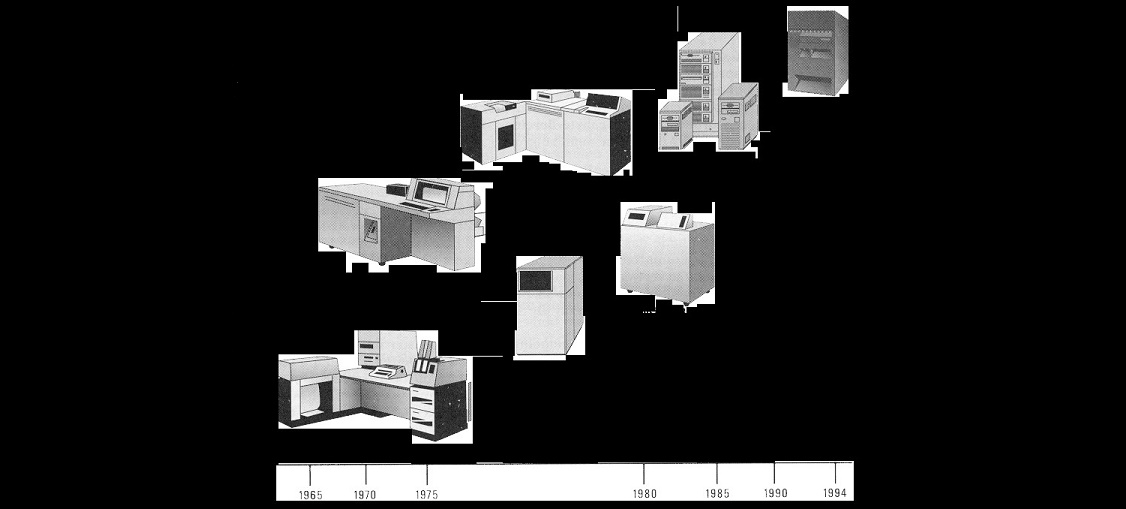Preamble
The Australian Computer Society (ACS) was formed 50 years ago, when the various state computer societies joined forces.
To mark the occasion, the ACS has initiated a heritage project to honour the many individuals who have contributed to the growth of the ICT profession in Australia.
At the heart of the project is a history of computing in Australia. It is not just a history of the ACS, but the history of a profession.
Australia has the longest computing history of any country, excepting the US and the UK, and CSIRAC in the Museum of Victoria is the oldest computer still in existence.
Chapter 37: HP and IBM rule the 80s
Hewlett-Packard (HP) was founded in Palo Alto in Silicon Valley in 1939, by William Hewitt and David Packard, in the proverbial garage. Both Hewlett and Packard had electrical engineering degrees from nearby Stanford University, and saw an opportunity to form a company to build electrical and electronic equipment.
During World War II, they designed counter radar technology and fuses for artillery shells. The two partners incorporated the company in 1947 and went public in 1957. Their first commercially successful product was an audio oscillator. HP entered the computer market in 1966 with the HP 1000 and HP 2100 machines.
HP became well known for its scientific calculators. The HP 9100A, introduced in 1968, is sometimes considered the first personal computer, though HP called it a calculator. Its handheld calculators were legendary – no self-respecting engineer would be seen without one. They were slide rule of the 1970s.
HP did not initially have a dedicated sales force, using only resellers. In 1962, it began developing its own sales force in the USA and started setting up international subsidiaries. In most cases, HP bought the HP distribution business (including employees and offices) from the local country distributor. That is what happened in Australia.
HP products were distributed in Australia by Melbourne-based Sample Electronics from the 1940s until HP bought the business in July 1967. All 29 employees made the transition from Sample to HP, including general manager John Warmington, who became HP Australia’s first managing director.
The first office was in Melbourne suburb of Glen Iris, with a few staff based in Sydney. In 1981, HP Australia became a public company and the name changed to Hewlett Packard Australia Ltd. HP Australia had sales of $2 million in its first year of operation in 1967-68. By 1977, it had grown to 240 staff. In 1986, annual sales reached $163 million and the company had 650 employees.
HP opened offices throughout Australia soon after the acquisition of Sample: Adelaide in 1967, Perth and Canberra in 1969, and Brisbane in 1972. In 1974, HP moved into a new custom-built facility in the Melbourne suburb of Blackburn. In 1980, the Sydney office moved into a custom-built building in the suburb of North Ryde.
The HP 3000 range of minicomputers, introduced in 1972, was extremely successful and remained in production until 2003. That machine ensured HP a place of the major minicomputer supplier, rivalling DEC and outselling most other vendors globally.
In 2002, HP acquired Compaq, which had itself acquired DEC in 1997 (see Chapter 36). In Australia, DEC had been much bigger than Compaq, and when HP acquired Compaq, the Australian operation more than doubled in size because it inherited the DEC user base and product line.
With the change in the balance of power, HP Australia moved its headquarters in Sydney, into the same building in Rhodes that DEC Australia had built for its Australian home in the early 1990s.
IBM
IBM, long the largest vendor in the computer industry, keenly felt the challenge from minicomputer suppliers in the 1960s and 1970s and responded with its own smaller machines. It released the range of very successful minicomputers which, if they had formed a computer company in their own right, would have been one of the largest in the industry.

The evolution of the IBM midrange 1969-1994. Source: IBM
IBM dabbled with small computers in the 1960s, but its first real entry into the minicomputer market was the System/3, released in 1969. It was an impressive machine that evolved into the 16-bit System/32 (otherwise known as the 5320), released in 1975. That was replaced by the System/34 in 1977, and the System/36 in 1983.
Those machines were logical progressions, but IBM also released the System/38 in 1979 (confusingly, before the System/36). It was a more advanced machine with a different heritage. It was very successful and evolved into the AS/400 range in 1988, a widely-anticipated machine that had been codenamed ‘Silverlake’ during its development. The ‘AS ‘stood for ‘Application System’, which was changed to ‘Advanced System’ later in the product lifecycle.
The AS/400 brought the System/36 and System/38 product lines together, though it was mostly based on the System/38. IBM also had a separate and incompatible minicomputer range called the Series/1, released in 1976 and discontinued in 1988. IBM called these computers its ‘midrange’, a term that came to be used generically and eventually replaced the term ‘minicomputer’.
IBM Australia created a General Business Group in 1975 to sell midrange computers. It was very successful. The System/36, System/38 and AS/400 machines were extremely popular in Australia. On a per capita basis, the AS/400 was even more popular in Australia than in the rest of the Western world. At one stage, nearly a quarter of all significant computer-using organisations had one.
It was particularly widely used in the wholesale/retail and manufacturing sectors, which were made up of the medium-sized businesses that are still the backbone of Australasian industry. But it became fashionable in some quarters to disparage the AS/400 and its success. Many in the industry didn't regard it as a ‘real’ computer, because of its many idiosyncrasies.
The AS/400 was one of the most popular minicomputers ever released, with around 500,000 shipped before it was replaced by the iSeries in 2000. An entire software ecosystem grew up around the architecture, with many development environments and software packages developed specifically for the architecture.
Many of these were written in Australia by independent software companies, such as Aspect, and Generator Systems. Kaz Computers, which was to become one of Australia’s largest computer services companies in the 1990s, initially based its operations around servicing Australia’s large IBM midrange user base.
Previously published:
Chapter 36: Data General and Sigma Data
Chapter 35: DEC leads the minicomputer boom
Chapter 34: David Hartley, Bill Gates and the one that got away
Chapter 33: Australia’s software entrepreneurs
Chapter 32: Multinational software companies move in
Chapter 31: Birth of Australian software and services industry
Chapter 30: The rise and decline of the PCMs
Chapter 29: ‘Plug compatible manufacturers’ take on IBM
Chapter 28: The rise of Fujitsu
Chapter 26: The rest of the BUNCH
Chapter 25: Honeywell in Australia
Chapter 23: ACS at home and abroad
Chapter 22: The early years of the Australian Computer Society
Chapter 21: Other Australian universities
Chapter 20: University of Melbourne and Monash
Chapter 19: Sydney University and UNSW lead the way
Chapter 18: Computing in the Australian Government
Chapter 17: Trevor Pearcey and the birth of CSIRONET
Chapter 16: Enter the minicomputer – DEC comes to Australia
Chapter 15: The IBM S/360 in Australia
Chapter 14: IBM redefines the computer industry
Chapter 13: Control Data Australia (part II)
Chapter 12: Control Data Australia (part I)
Chapter 11: The Australian Computer Society
Chapter 10: Five Computer Societies
Chapter 9: Australian made, Australian designed
Chapter 8: Australia's Computer Industry in 1962
Chapter 5: SILLIAC and the Snowy Mountains Scheme
Chapter 3: Harry Messel and the birth of SILLIAC




.jpg)





